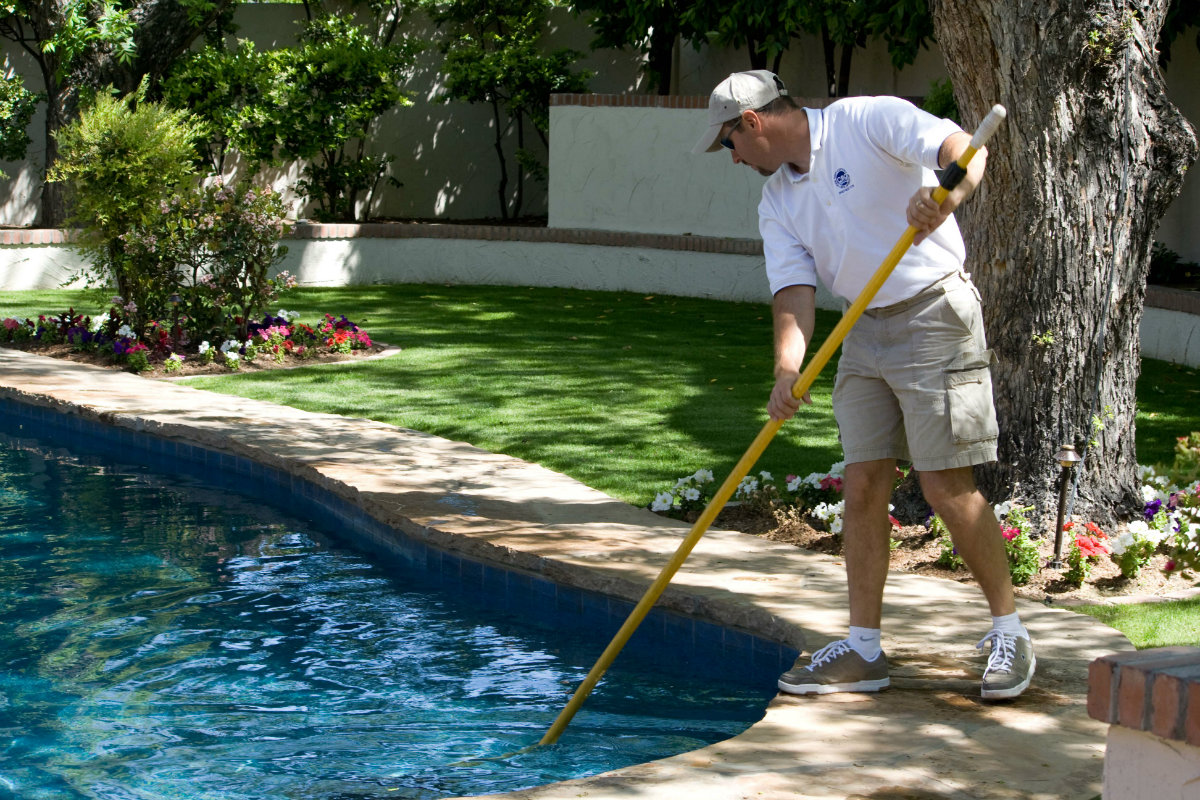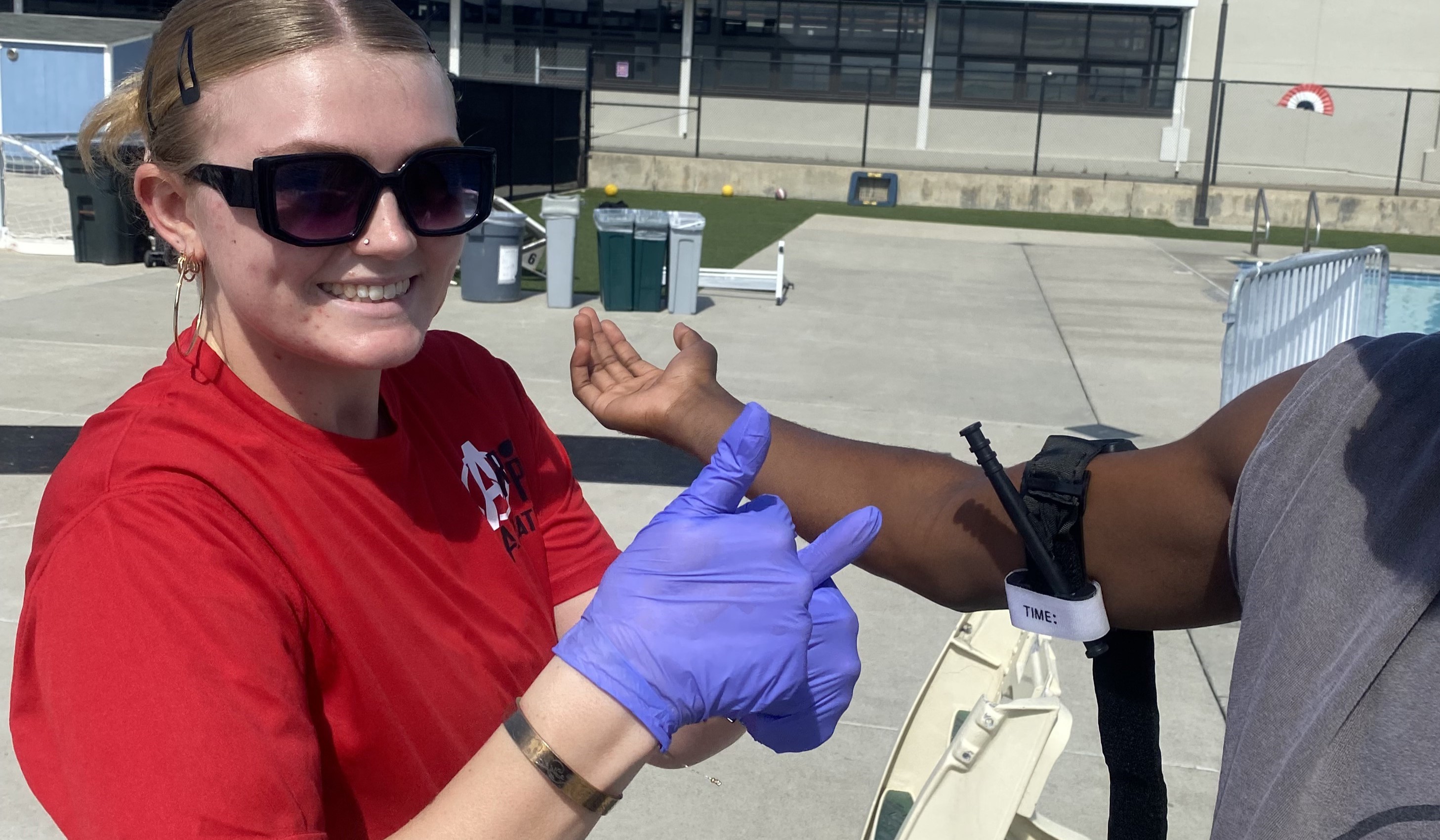The popping sound Eric Resh’s stiff thumbs made when he flexed them indicated he should find a new occupation, or at least a different telescoping pole.
Maintaining 10 to 12 pools a day over the course of a decade had done a number on his hands, particularly the middle joint of both thumbs. “Every night when I came home, my thumbs would lock into place,” Resh recalls. “I had to squeeze my hand to unlock it from that position.”
While his condition was never diagnosed, the symptoms sound like trigger thumb, a painful condition caused by an inflamed tendon. The tendon is supposed to slide smoothly through a sheath, allowing the thumb to bend and flex freely. But when there isn’t enough lubrication, the tendon can catch, locking the thumb in a bent position. Unlocking the thumb can result in an audible snap.
Resh believed he found the source of his problem: The external twist-lock mechanisms on his telescoping pole. The repetitive motion required to adjust the length — like twisting a cap off a bottle — had eventually taken its toll.
Consider how often you crank on those plastic rings to clamp your telescopic pole in place. You have to extend it for the deep end, shorten it to work around tight spaces, collapse it to put it in the truck. And a triple-length pole means yet another twist-cam lock to deal with. By the end of the day, you may have performed the grip-and-twist action 100 times.
This issue poses a real problem to techs of all stripes. But more professionals are taking notice and offering new products and advice to prevent long-term injury.
Wristy business
Indeed, pool maintenance is an industry where hand and wrist pains are very real occupational hazards. In many ways, service pros perform similar tasks as janitors, a group OSHA identified as being at risk of carpal tunnel syndrome, an ailment that afflicts people who work with their hands for a living. All the scrubbing, mopping and sweeping makes them vulnerable to repetitive stress injuries, the agency says.

Pool service professionals, however, may face even more risk than their janitorial counterparts. When techs perform routine tasks such as brushing and vacuuming, it’s in thousands of gallons of water. All that resistance creates even more stress on the upper extremities.
Dr. John Knight, director of the Hand and Wrist Institute in Beverly Hills, Calif., sees why some pool pros are going home sore at the end of the day. “I look at these people when they come to clean my own pool … they basically have a long lever arm hanging off of their own arm. And they’re pushing against the side of the pool or bottom of the pool and scrubbing with it,” Dr. Knight says. “So it’s quite vigorous, the stress across the arms and the wrist.”
-
For Pool Pros, Here’s How to Prevent Carpal Tunnel Syndrome
Stretching, splints and pain-relievers — your hands deserve much-needed downtime

There can be serious consequences over time. Gary Harrell, owner of Trinity Pool Care in Arlington, Texas, underwent two rotator cuff surgeries due to the cumulative effects of “old age” and pushing a pole for 21 years. For years, he favored fiberglass poles. Though sturdier than aluminum, they’re heavier. And Harrell has had issues with overtightening the locks on some models, requiring him to really muscle it. Heavy poles, stubborn locks and the day-to-day duties of being a pool pro wore out his joints. “It was the wrists and shoulder that would hurt the most,” he says.
Tools to take the load off
Whatever professionals can do to minimize stress will help prevent injuries. Fortunately, some in the industry have taken notice and are finding ways to alleviate the pressure.
After looking for an alternative and finding none, Resh designed his own telescopic pole. This one featured a push-lock mechanism near the grip handle. Pressing a button releases an internal lever, allowing the service professional to easily extend or collapse the pole. “It’s largely gone away,” Resh says of his thumb pain.
Today, Resh is the CEO of The Smart! Company, maker of the lever-locking Stingray Pole, in Murrieta, Calif. You may have seen it advertised on Spike TV. (Kevin Harrington of Shark Tank and As-Seen-On-TV fame is pushing the product.)
Likewise, the Animal ProLock from Oreq boasts push-button ease.
Another potentially strain-reducing product uses water resistance to work for you, rather than against you. Wall Whale is a brush with a large, flat plastic fin. As you push, the fin uses water pressure to hold the brush flat against the surface — much like how a spoiler on a race car helps keep the rear wheels down. This can help relieve some of the pressure from your wrists, arms and shoulders.
“Once you get far out there with a normal brush, it’s not going to do what you want,” says Carl Erdman, commercial maintenance manager at Hammerhead Pool Services in Raleigh, N.C. “You’ll fight it coming off the ground.” The Wall Whale, he adds “keeps it stuck to the bottom.”
Also think about recruiting robotic help. Once considered a threat to service pros’ very livelihoods, automatic pool cleaners — be they of the robotic, pressure- or suction-side variety — can actually help a tech work faster and smarter. A word of caution: If you already experience pains in the upper extremities, these devices might not be your best bet. They can be heavy when filled with water and debris. So consider them a preventive measure.
Depending on the pool’s size, these units can take upwards of two hours to do the job. So there would be some logistics to work out. It’s not as though you can wait around idly while the machine labors away. You’ve got other pools to get to.
“I think the solution would be very careful planning,” advises Steve White, president of Underwater Pool Masters in West Boylston, Mass. His firm deploys these units for heavy-duty cleanings during spring openings.
For more routine, day-to-day use, you’d probably need to leave it and retrieve it later. If doing this, White suggests, you’ll probably want to schedule the next stop or two within 2 or 3 miles, making it convenient to wind back and pick up the unit.
Even if a machine cleaned just one pool a day, that’s one less pool you have to brush manually, saving approximately 20 to 30 minutes. Spread over the course of a week, that saves a lot of time — and hand/wrist pain. It’s like having a part-time employee you don’t have to pay.



